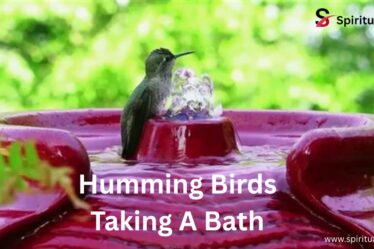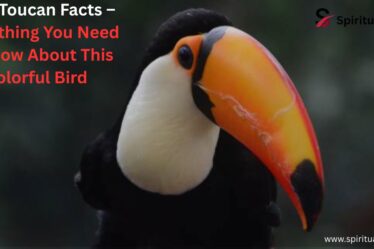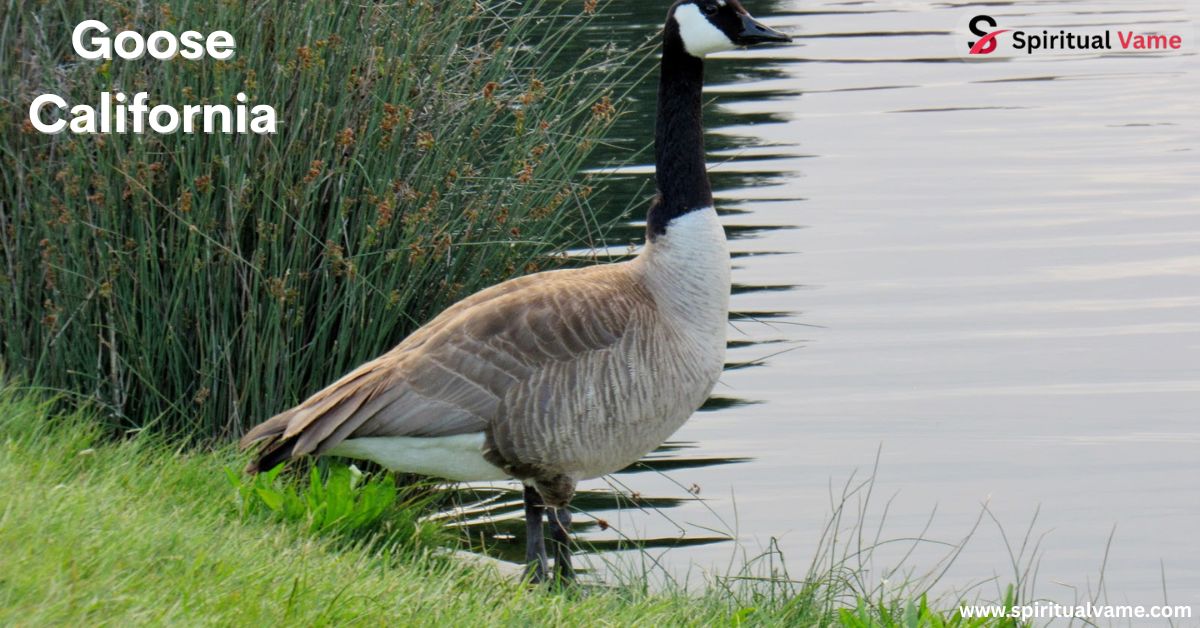
California is one of the best places in the USA to see a wide variety of geese. These beautiful birds live in wetlands, fields, and even in cities. In this guide, we’ll look at five special geese that you can find in California and help you identify them. Each goose has its own shape, color, and behavior, making it easier to tell them apart once you know what to look for.
The Snow Goose (Anser caerulescens) has bright white plumage with black wingtips. Sometimes, you might also see the blue morph, a darker version. These geese travel in noisy flocks and love to feed in wetlands and agricultural fields. The Ross’s Goose (Anser rossii) looks similar but is smaller, with a short neck and a high-pitched call. The Cackling Goose (Branta hutchinsii) looks like a tiny version of the Canada Goose. It has a short neck, stubbier bill, and makes a high-pitched honking sound. These geese are often found in wetlands and agricultural areas.
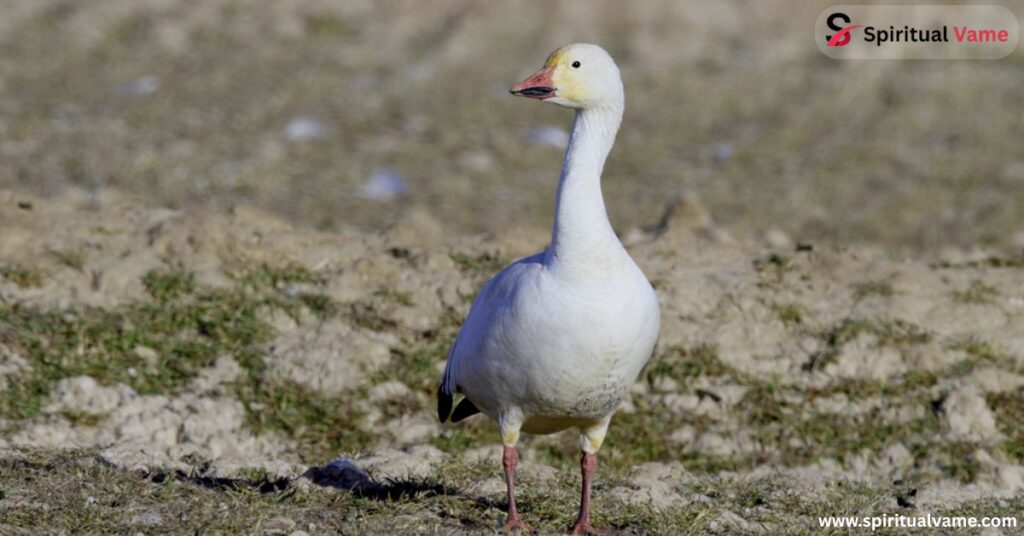
The Greater White-fronted Goose (Anser albifrons) has black barring on its belly and a white patch around its beak. It makes a laughing-like call and is known for strong family bonds. The Brant (Branta bernicla) is smaller and darker, with a black head and a small white patch on the neck. Brants stay near coastal areas, eating eelgrass and other aquatic vegetation. You’ll often hear their guttural calls near the ocean.
Goose in California
California is home to many types of geese, thanks to its mix of wetlands, lakes, coasts, and open fields. Some geese live here year-round, while others visit during migration. You’ll find them in urban areas, parks, golf courses, and agricultural fields, especially during winter. These birds are part of the Pacific Flyway, a major bird migration route across the western United States.
Geese play an important role in California’s ecosystem. They feed on leftover grain in harvested fields and help control plant growth in wetlands. You’ll often see them flying in a V-formation, which helps them save energy on long flights. Their loud honking sounds can be heard from a distance, especially when large groups take off or land. Some species, like the Canada Goose (Branta canadensis), are now common in cities and have adapted well to human environments.
Types of Goose in California
California has a variety of geese, each with its own traits. You can tell them apart by looking at their size, colors, and the sounds they make. From tiny Ross’s Geese to large Canada Geese, there’s plenty to observe. Below, you’ll learn more about each species.
1. Snow Goose (Anser caerulescens)
The Snow Goose is one of the most eye-catching geese in California. Its bright white plumage, paired with black wingtips, makes it easy to spot, especially in flight. Some birds show the blue morph, a mix of gray and white. Snow Geese migrate in massive, noisy flocks, filling the skies with their constant chatter.
You’ll mostly find them in wetlands and agricultural fields where they search for leftover grain. But large flocks can also cause problems, such as defecation in public areas. Despite this, their presence brings excitement to birdwatchers every winter.
2. Ross’s Goose (Anser rossii)
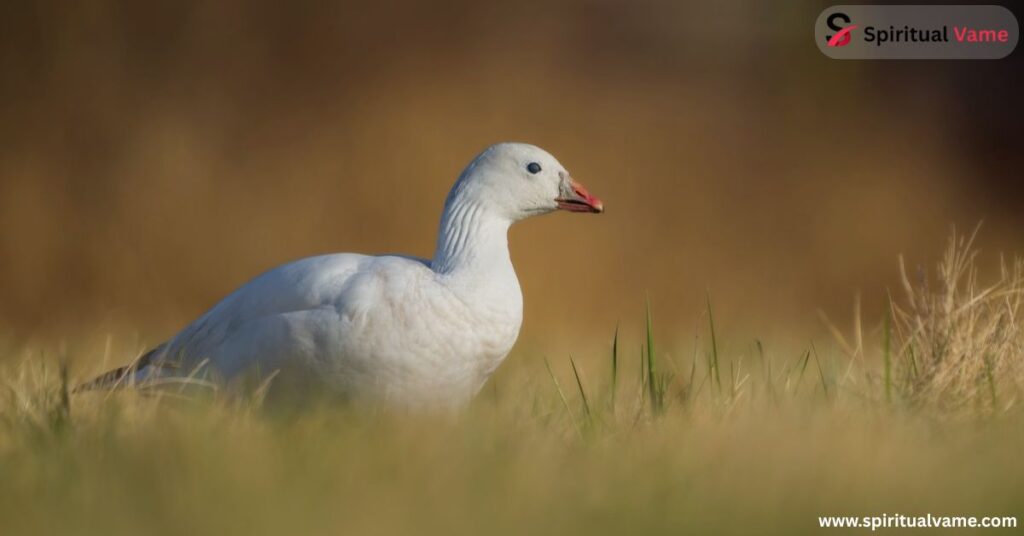
Smaller than the Snow Goose, the Ross’s Goose has a short neck and a rounded head. It also has black wingtips, though its body is fully white. These geese travel in the same areas as Snow Geese but are fewer in number.
You’ll hear their high-pitched calls in open wetlands and fields, especially in the Central Valley. They are social birds and often join larger flocks of other species. Their small size and short neck are the key traits to look for when identifying them.
3. Cackling Goose (Branta hutchinsii)
The Cackling Goose is often mistaken for a Canada Goose, but it’s much smaller. It has a short neck, stubbier bill, and a high-pitched honking sound that’s quite different from the deep honk of its larger cousin. You’ll find them in wetlands and nearby agricultural areas during the winter.
These birds are tough to spot if you’re not paying attention. Listening for their sound and watching for their compact shape will help you tell them apart. According to Animal Diversity Web, their body shape and voice are key identification tools.
4. Greater White-fronted Goose (Anser albifrons)
This goose is easily spotted by the black barring on its belly and the white patch at the base of its bill. It also has an orange beak and feet. The Greater White-fronted Goose makes a laughing-like call that’s very different from other geese.
They stick close to their families and often travel in tight flocks. You’ll find them in wetlands and open fields, especially during migration. Their strong family bonds and unique markings make them a favorite among birders.
5. Brant (Branta bernicla)
The Brant is a smaller goose with a black head and a narrow white patch on its neck. It stays close to coastal areas, where it feeds mostly on eelgrass and other aquatic vegetation. You won’t usually find them far inland.
Brants are quiet compared to other geese, but they make a guttural call that sounds deep and low. They fly in low groups just above the water, often near bays and estuaries along the California coast.
Goose Habitat and Ecology in California
California’s rich landscapes provide the perfect home for geese. Wetlands, flooded fields, lakes, and coastlines give them space to feed, rest, and breed. Some species stay here year-round, while others migrate south for winter. The Pacific Flyway brings thousands of birds through California every year, making it a major goose-watching state.
Geese play an important role in their habitat. They eat grasses, seeds, and aquatic plants, helping to manage plant growth. In agricultural fields, they clean up leftover grains but sometimes damage crops too. Natural threats like predators and harsh weather can affect their numbers, but human changes to land and water are the biggest concern for their survival.
Goose and Human Interaction
Geese often live close to people. You’ll see Canada Geese (Branta canadensis) in urban areas, parks, and golf courses. Their cheekpatch, black neck, and loud honking make them easy to recognize. But not everyone enjoys their company. Some people complain about defecation and aggressive behavior, especially during nesting season.
Still, many enjoy watching geese and hearing their calls. Groups like the U.S. Fish and Wildlife Service work to protect both the birds and their habitats. Education programs help people understand why geese matter and how to live with them in shared spaces.
Best Locations for Goose Watching in California
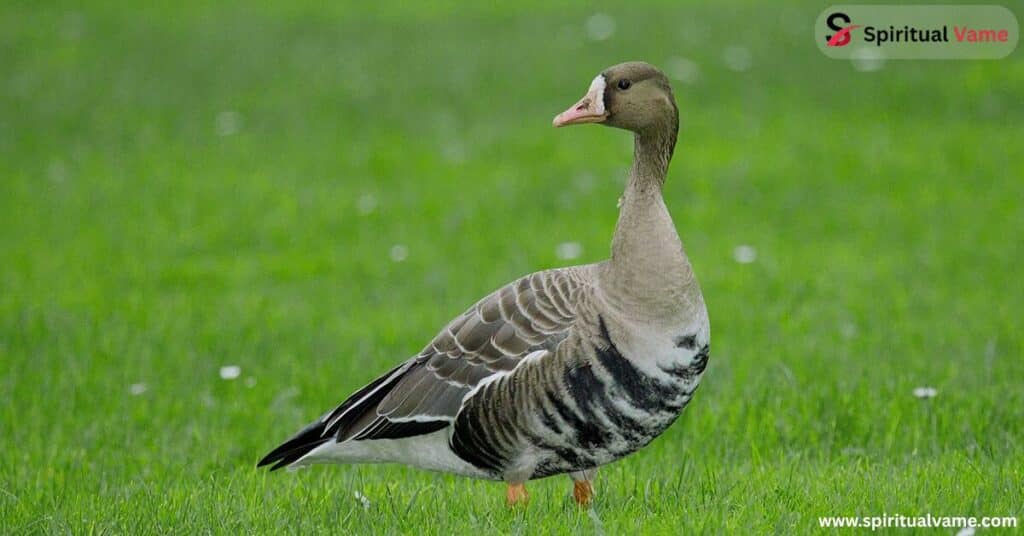
If you love birdwatching, California has many great spots for seeing geese. Head to the Central Valley, where places like the Sacramento National Wildlife Refuge, Yolo Bypass, and Gray Lodge attract thousands of geese each winter. These areas are full of wetlands and fields, the perfect combination for wintering flocks.
Along the coast, check out Humboldt Bay or Morro Bay to see Brants flying low over the water. At Lake Merritt in Oakland or the Salton Sea, you’ll find a mix of geese and other waterbirds. Bring binoculars, and go early in the morning or at dusk for the best views. Stay quiet and keep your distance to avoid scaring them away.
Conservation Efforts for Geese in California
With growing cities and farming, geese face shrinking habitats. Many groups are working hard to protect their spaces. The U.S. Fish and Wildlife Service supports wetland projects that help geese and other waterbirds. Protected areas and refuges are also key to their survival.
Citizen science programs like bird counts help track goose numbers and spot changes. When people learn more about geese, they’re more likely to help. Teaching children and adults how to enjoy wildlife responsibly helps make sure future generations can enjoy these amazing birds too.
Geese and swans are some of the largest birds you will find in California!
When you spot a Trumpeter Swan flying overhead, it’s hard to miss. These are the largest birds native to California. They glide across water with ease and trumpet calls that echo across the wetlands. Other large species, like the Tundra Swan, have a yellow patch on the bill and live in large bodies of water and open fields.
Even Mute Swans, though not native, are found in city parks and ornamental lakes. They have a bright orange bill and a black knob on their head. Although beautiful, they can be aggressive and don’t always mix well with other birds.
Conclusion
Goose California is a special bird. Many people love to watch Goose California in the wild. It has a strong body and a long neck. Goose California lives near lakes and rivers. It eats grass, seeds, and small insects. The bird flies in groups during the cold season. Goose California is calm but careful of danger. It protects its home and young ones.
People in California enjoy seeing Goose California every year. It adds beauty to parks and nature spots. Goose California is part of the state’s wildlife. We should protect Goose California and its home. Goose California needs clean water and safe places. Saving Goose California helps nature and people too.

